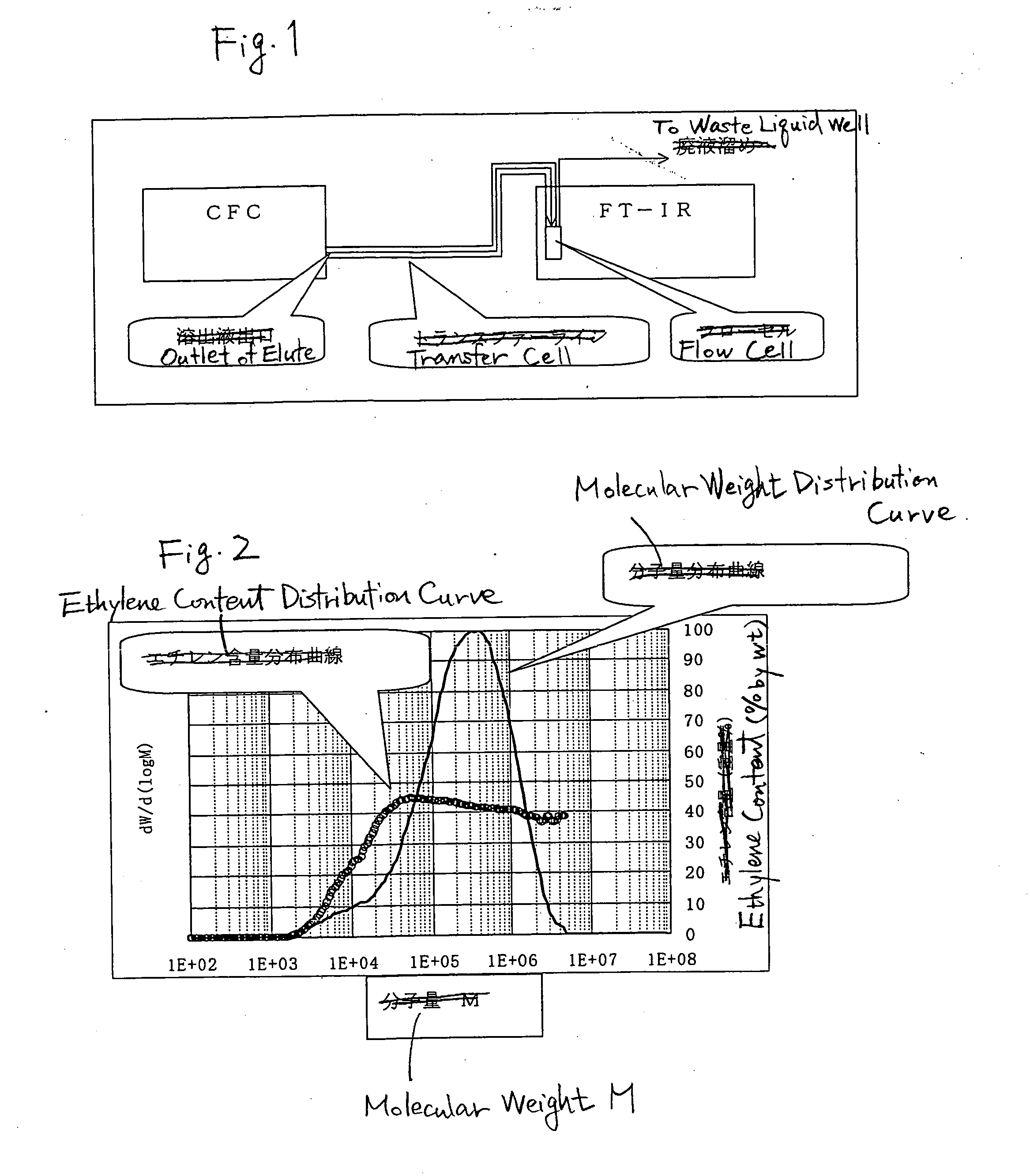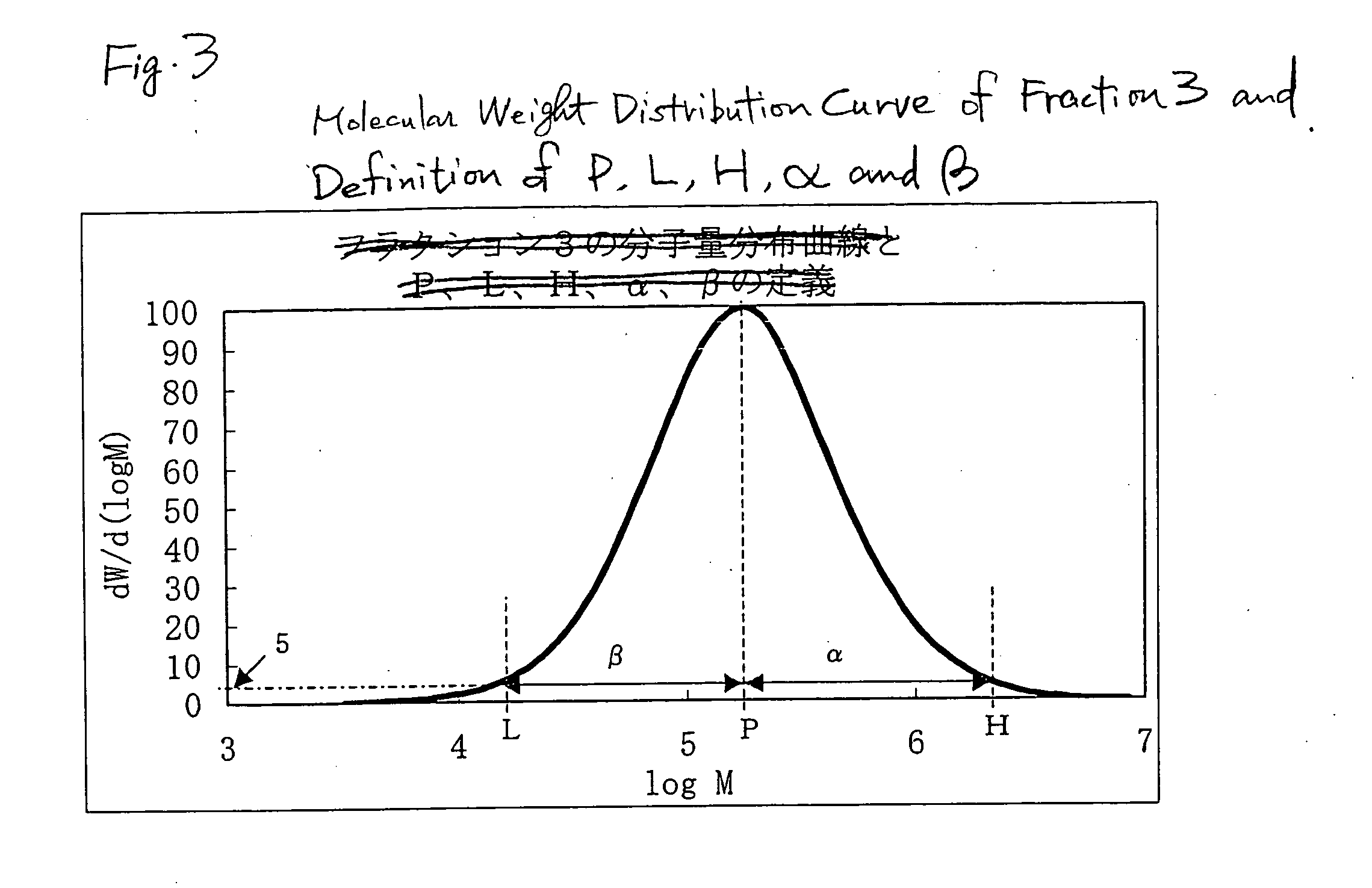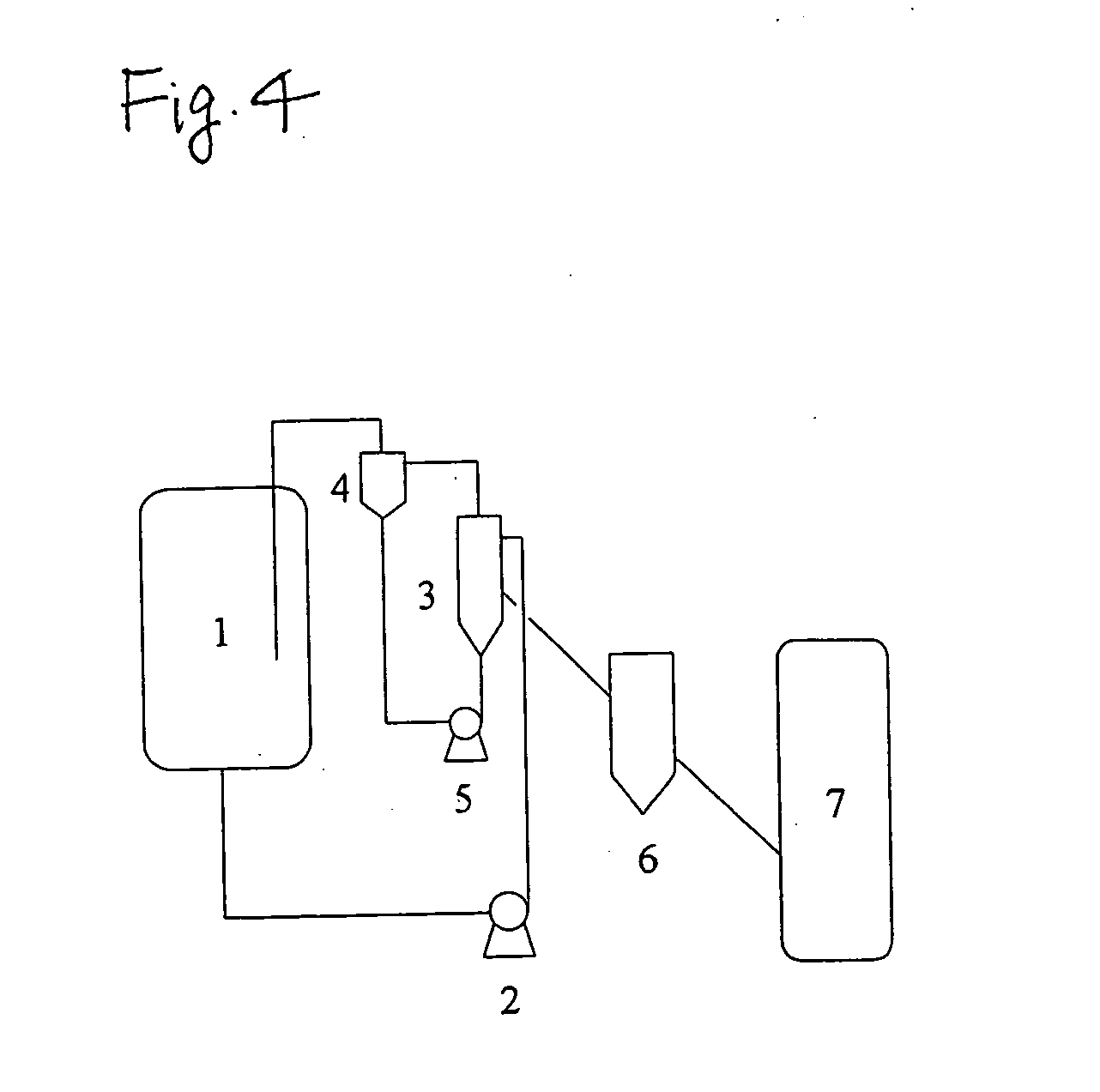Propylene block copolymer
a technology of apropylene block and a copolymer, applied in the field of propylene based block copolymer, can solve the problems of insufficient impact resistance, high stiffness, poor moldability improvement, etc., and achieve good stiffness-impact resistance balance, high heat resistance, and high stiffness.
- Summary
- Abstract
- Description
- Claims
- Application Information
AI Technical Summary
Benefits of technology
Problems solved by technology
Method used
Image
Examples
example 1
Synthesis of Complex
(1) Synthesis of dichloro {1,1′-dimethylsilylenebis[2-ethyl-4-(2-fluoro-4-biphenyl)-4H-azulenyl]}hafnium
[0197] (a) Synthesis of Racemic / Meso Mixture:
[0198] 2-Fluoro-4-bromobiphenyl (4.63 g, 18.5 mmol) was dissolved in a mixed solvent of diethyl ether (40 mL) and hexane (40 mL), to which was then added dropwise a pentane solution of t-butyllithium (22.8 mL, 36.9 mmol, 1.62 N) at −78° C., and the mixture was stirred at −5° C. for 2 hours. 2-Ethylazulene (2.36 g, 16.6 mmol) was added to the resulting solution, and the mixture was stirred at room temperature for 1.5 hours. After cooling to 0° C., tetrahydrofuran (40 mL) was added thereto. N-Methylimidazole (40 μL) and dimethyldichlorosilane (1.0 mL, 8.30 mmol) were further added, the temperature was raised to room temperature, and the mixture was then stirred at room temperature for one hour. Thereafter, dilute hydrochloric acid was added to the reaction mixture, and after liquid separation, an organic phase was d...
example 2
[0220] Polymerization was carried out in the same manner as in Example 1, except that in the subsequent stage polymerization for producing EP of Example 1, the composition of the mixed gas to be introduced at the time of initiation of the polymerization was set up at 75% by mole of ethylene and that a mixed gas containing 55% by mole of ethylene was introduced during the polymerization.
example 3
[0232] In a well dried 3-liter autoclave equipped with an agitator, 200 mg of triisobutylaluminum, 90 NmL of hydrogen, and 750 g of propylene were introduced, the temperature in the polymerization vessel was kept at 65° C., and the preliminarily polymerized polymerization catalyst used in Example 1 was introduced under pressure in an amount of 55 mg reduced as the solid catalyst component, thereby initiating bulk polymerization of propylene. The temperature was kept at 65° C. during the polymerization, and hydrogen was continuously introduced at a rate of 100 NmL / hr such that the hydrogen concentration of the gas phase portion in the polymerization system was kept constant.
[0233] After a lapse of one hour, the unreacted monomer was purged and then displaced with a nitrogen gas. Subsequently, a mixed gas of propylene and ethylene was introduced such that the molar fraction of ethylene became 65% by mole and that the whole pressure of the polymerization vessel became 1.8 MPa, thereby...
PUM
| Property | Measurement | Unit |
|---|---|---|
| Temperature | aaaaa | aaaaa |
| Temperature | aaaaa | aaaaa |
| Fraction | aaaaa | aaaaa |
Abstract
Description
Claims
Application Information
 Login to View More
Login to View More - R&D
- Intellectual Property
- Life Sciences
- Materials
- Tech Scout
- Unparalleled Data Quality
- Higher Quality Content
- 60% Fewer Hallucinations
Browse by: Latest US Patents, China's latest patents, Technical Efficacy Thesaurus, Application Domain, Technology Topic, Popular Technical Reports.
© 2025 PatSnap. All rights reserved.Legal|Privacy policy|Modern Slavery Act Transparency Statement|Sitemap|About US| Contact US: help@patsnap.com



